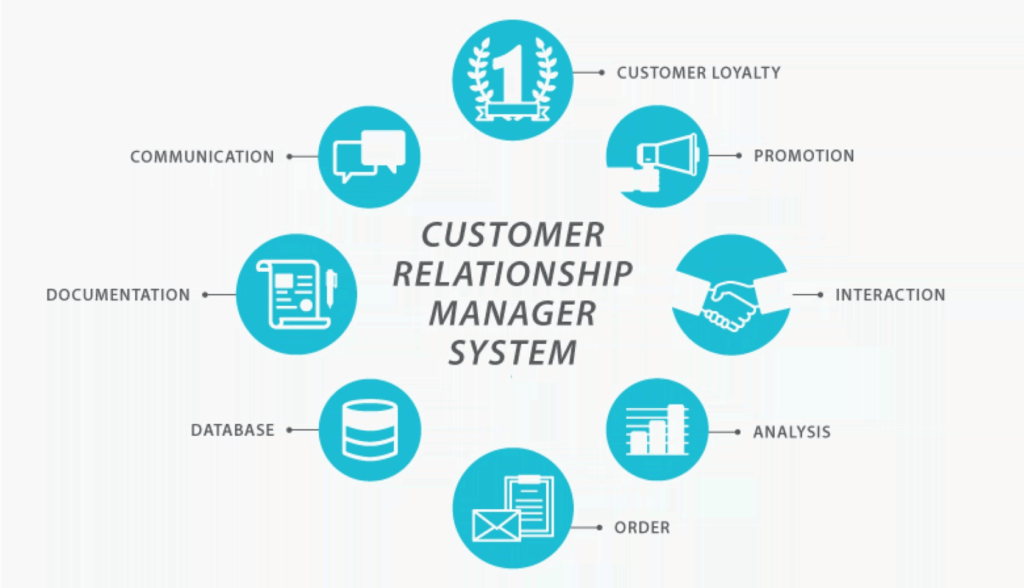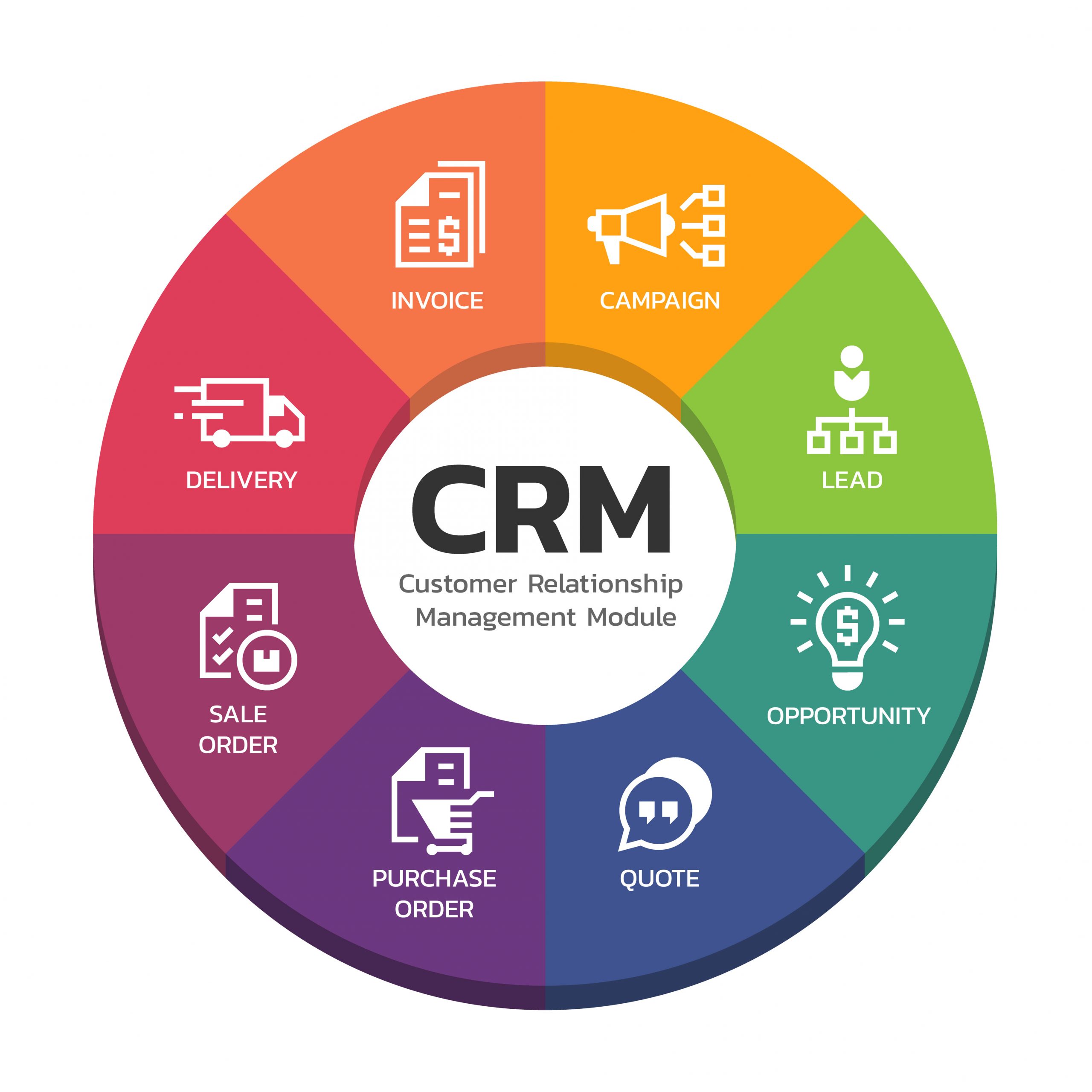Customer relation management crm – Customer relation management (CRM) has emerged as a cornerstone of modern business operations, offering a comprehensive suite of tools to foster stronger customer relationships and drive business growth. By leveraging CRM systems, businesses can streamline their customer interactions, automate processes, and gain valuable insights into customer behavior.
The implementation of a CRM system can bring numerous benefits to businesses, including improved customer satisfaction, increased sales, and reduced operational costs. However, it’s essential to navigate the challenges associated with CRM implementation, such as data integration and user adoption.
With careful planning and a focus on aligning CRM goals with overall business objectives, organizations can harness the full potential of CRM and reap its transformative benefits.
Introduction to Customer Relationship Management (CRM): Customer Relation Management Crm
In today’s competitive business landscape, customer satisfaction and loyalty are crucial for success. Customer Relationship Management (CRM) has emerged as a powerful tool that helps businesses manage and nurture customer relationships effectively.
CRM is a comprehensive approach that involves collecting, analyzing, and managing customer data to gain insights into their preferences, behaviors, and experiences. By leveraging this data, businesses can personalize their interactions with customers, build stronger relationships, and drive business growth.
Key Benefits of CRM
- Improved customer satisfaction and loyalty
- Increased sales and revenue
- Enhanced customer service and support
- Better marketing campaigns
- Optimized business processes
Challenges of Implementing CRM
While CRM offers numerous benefits, its implementation can also present certain challenges:
- High cost of implementation and maintenance
- Complexity of choosing the right CRM system
- Resistance from employees to change
- Data security and privacy concerns
- Lack of integration with other business systems
Despite these challenges, the benefits of CRM often outweigh the costs. By investing in a CRM system, businesses can gain a competitive advantage and establish long-lasting customer relationships.
Types of CRM Systems
Customer Relationship Management (CRM) systems are designed to manage interactions with customers, enhance customer experiences, and streamline business processes. Different types of CRM systems are available, each with its own set of features and capabilities. Understanding the various types of CRM systems can help businesses choose the right solution for their specific needs.
Operational CRM
- Automates customer-facing processes, such as sales, marketing, and customer service.
- Provides a centralized platform for managing customer data and interactions.
- Improves operational efficiency and productivity.
Analytical CRM
- Analyzes customer data to identify patterns, trends, and insights.
- Helps businesses understand customer behavior, preferences, and buying habits.
- Supports data-driven decision-making and targeted marketing campaigns.
Collaborative CRM
- Facilitates collaboration between different departments within an organization.
- Provides a shared platform for accessing and sharing customer information.
- Improves communication and coordination, leading to better customer service.
Features and Functionality of CRM Systems

CRM systems are equipped with a range of features and functionalities that empower businesses to manage customer interactions effectively. These core features include contact management, sales automation, marketing automation, and customer service.
Contact management is a fundamental aspect of CRM, enabling businesses to store and organize customer information, including contact details, demographics, and interaction history. This centralized database allows for easy access to customer profiles, facilitating personalized interactions and efficient communication.
Sales Automation
- Streamlines the sales process by automating repetitive tasks, such as lead generation, lead qualification, and opportunity management.
- Provides real-time insights into sales performance, enabling managers to track progress, identify bottlenecks, and optimize strategies.
- Improves collaboration between sales and marketing teams, ensuring seamless lead handoffs and enhanced customer engagement.
Marketing Automation
- Automates marketing campaigns, including email marketing, social media marketing, and content marketing.
- Segments customers based on specific criteria, allowing for targeted and personalized marketing efforts.
- Tracks campaign performance and provides analytics, enabling marketers to measure the effectiveness of their campaigns and make data-driven decisions.
Customer Service
- Provides a centralized platform for managing customer support requests, including phone calls, emails, and live chat.
- Automates customer service processes, such as ticket routing, escalation, and resolution.
- Empowers customer service representatives with access to customer history and preferences, enabling them to provide personalized and efficient support.
By leveraging these features, CRM systems empower businesses to enhance customer interactions, improve operational efficiency, and drive business growth.
Benefits of Implementing a CRM System
Customer relationship management (CRM) systems provide numerous tangible and intangible benefits for businesses. These benefits include improved customer satisfaction, increased sales, reduced operational costs, and enhanced decision-making.
Improved Customer Satisfaction
CRM systems enable businesses to track and manage customer interactions, providing a complete view of each customer’s history and preferences. This allows businesses to personalize interactions, resolve issues quickly, and proactively address customer needs, leading to increased customer satisfaction.
For example, a study by Salesforce found that companies that implemented CRM systems saw a 20% increase in customer satisfaction.
Increased Sales
CRM systems can help businesses identify and target potential customers, track sales pipelines, and close deals more efficiently. By providing a centralized view of customer data, CRM systems enable sales teams to prioritize leads, personalize outreach, and track progress, resulting in increased sales.
A study by Aberdeen Group found that companies that implemented CRM systems experienced a 15% increase in sales.
Reduced Operational Costs, Customer relation management crm
CRM systems can automate many tasks that are traditionally performed manually, such as data entry, lead generation, and customer support. This can free up employees to focus on more strategic tasks, leading to reduced operational costs.
For example, a study by Nucleus Research found that companies that implemented CRM systems saw a 25% reduction in operational costs.
Enhanced Decision-Making
CRM systems provide businesses with valuable insights into customer behavior, preferences, and trends. This information can be used to make better decisions about product development, marketing campaigns, and customer service strategies.
For example, a study by Forrester Research found that companies that implemented CRM systems saw a 10% improvement in decision-making.
Challenges of Implementing a CRM System

Implementing a CRM system can bring significant benefits to businesses, but it also comes with challenges. Some common obstacles include data integration, user adoption, and budget constraints.
Data Integration
Integrating data from multiple sources into a CRM system can be a complex and time-consuming process. Data may be stored in different formats and systems, requiring extensive data mapping and cleansing. This can delay the implementation process and increase costs.
User Adoption
Getting users to adopt a new CRM system can be a challenge. Users may be resistant to change or lack the necessary training to use the system effectively. This can lead to low usage and a lack of ROI.
Budget Constraints
CRM systems can be expensive to implement and maintain. Businesses need to carefully consider their budget and ensure that they have the resources to support the system over the long term.
Best Practices for CRM Implementation
Implementing a CRM system successfully requires careful planning and execution. Here’s a step-by-step guide to help you navigate the process effectively:
Planning
- Define clear goals:Determine what you want to achieve with the CRM system, whether it’s improving customer satisfaction, increasing sales, or streamlining operations.
- Analyze business processes:Map out your current customer-facing processes to identify areas for improvement and integration with the CRM system.
- Select the right CRM vendor:Research and evaluate different CRM providers to find one that aligns with your specific needs and budget.
Data Migration
- Prepare and clean data:Ensure that your customer data is accurate, complete, and organized before migrating it to the new CRM system.
- Map data fields:Establish clear mappings between the fields in your old system and the corresponding fields in the new CRM system.
- Perform data validation:Test the migrated data to verify its accuracy and completeness before going live with the new system.
Training
- Provide comprehensive training:Train your team thoroughly on the new CRM system, including its features, functionality, and best practices.
- Offer ongoing support:Establish a support system to assist users with any questions or issues they encounter after implementation.
- Foster user adoption:Encourage team members to use the CRM system consistently and provide feedback to improve its effectiveness.
Ongoing Maintenance
- Monitor system performance:Regularly track key performance indicators (KPIs) to assess the effectiveness of the CRM system.
- Perform regular updates:Keep the CRM system up-to-date with the latest software releases and security patches.
- Seek continuous improvement:Regularly review the CRM system’s functionality and identify areas for optimization and enhancement.
Importance of Aligning CRM Implementation with Overall Business Goals
Aligning CRM implementation with overall business goals is crucial for its success. By ensuring that the CRM system supports and complements your broader business objectives, you can maximize its impact and drive tangible results. Here’s how alignment benefits CRM implementation:
- Improved customer experience:A CRM system that aligns with your customer-centric goals can enhance customer satisfaction and loyalty.
- Increased sales productivity:By providing sales teams with the right tools and insights, a well-aligned CRM system can boost sales performance.
- Enhanced operational efficiency:A CRM system that streamlines processes and automates tasks can improve operational efficiency and reduce costs.
- Better decision-making:With centralized customer data and analytics, a CRM system can provide valuable insights to inform decision-making and drive growth.
Emerging Trends in CRM

The rapid evolution of technology is transforming the customer relationship management (CRM) landscape. Emerging trends such as artificial intelligence (AI), machine learning (ML), and cloud computing are shaping the future of CRM and customer engagement.
AI and ML in CRM
AI and ML algorithms are being integrated into CRM systems to automate tasks, enhance customer insights, and improve decision-making. AI-powered chatbots provide 24/7 customer support, while ML algorithms analyze customer data to identify patterns, predict customer behavior, and personalize marketing campaigns.
Cloud-Based CRM
Cloud computing is revolutionizing CRM by providing businesses with scalable, cost-effective, and accessible CRM solutions. Cloud-based CRM systems eliminate the need for on-premises hardware and IT infrastructure, enabling businesses to focus on customer engagement rather than managing complex IT systems.
Customer Data Analytics
Advanced analytics capabilities are becoming essential for CRM systems. By analyzing customer data from multiple sources, businesses can gain a comprehensive understanding of customer behavior, preferences, and needs. This data-driven approach enables businesses to tailor their marketing and sales strategies for maximum impact.
Omnichannel Customer Engagement
Customers today expect seamless experiences across multiple channels. CRM systems are evolving to support omnichannel engagement, enabling businesses to track customer interactions across touchpoints such as email, social media, live chat, and phone. This holistic view of the customer journey allows businesses to provide personalized and consistent experiences.
Integration with Other Business Systems
Modern CRM systems are designed to integrate with other business systems, such as ERP, marketing automation, and social media management platforms. This integration streamlines data sharing, automates workflows, and provides a unified view of customer information across the organization.
Case Studies of Successful CRM Implementations

In the business realm, customer relationship management (CRM) systems have emerged as game-changers, enabling companies to cultivate robust relationships with their clientele. To illustrate the transformative power of CRM, let’s delve into case studies of organizations that have reaped substantial benefits from implementing these systems.
One notable example is Salesforce, a trailblazing provider of cloud-based CRM solutions. Salesforce’s CRM suite has empowered businesses across industries to streamline sales, enhance customer service, and drive growth. Companies like Amazon, Spotify, and Toyota have harnessed Salesforce’s capabilities to personalize customer experiences, increase sales conversions, and improve overall operational efficiency.
Strategies and Tactics for Successful CRM Implementation
The success stories of these organizations highlight the importance of adopting a strategic approach to CRM implementation. Key strategies and tactics include:
- Clear Business Objectives:Defining specific, measurable, achievable, relevant, and time-bound (SMART) goals ensures that CRM implementation aligns with overall business objectives.
- Data Integration:Consolidating customer data from various sources into a centralized CRM system provides a comprehensive view of customer interactions.
- Process Automation:Automating repetitive tasks, such as lead generation, email marketing, and order processing, frees up valuable time for sales and customer service teams.
- Employee Training:Providing comprehensive training to employees on CRM functionality and best practices ensures effective adoption and utilization.
- Continuous Evaluation:Regularly monitoring CRM performance and gathering feedback from users helps identify areas for improvement and optimize system effectiveness.
By embracing these strategies and tactics, businesses can harness the full potential of CRM systems to transform their customer relationships and drive sustainable growth.
Final Conclusion
In the ever-evolving business landscape, CRM has become an indispensable tool for organizations seeking to establish lasting customer relationships and achieve sustainable growth. By embracing the latest CRM trends and leveraging best practices, businesses can empower their teams to deliver exceptional customer experiences, drive loyalty, and ultimately achieve long-term success.
 Lingkupruang.biz.id The Ultimate Guide to CRM Mastery
Lingkupruang.biz.id The Ultimate Guide to CRM Mastery